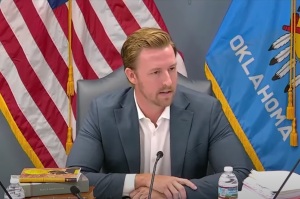The 2016 Senate Republicans Homework to Avoid Democrat Mistakes of 2012
Burr is not particularly well known even as he approaches the end of his second term, and he is not sitting on a giant war chest (he has less than $1 million cash on hand, generally much less than other vulnerable senators who have upcoming races). Burr says he is running again, and he has always put together competent campaigns and outperformed the early polls on Election Day. His top potential challenger might be outgoing Sen. Kay Hagan (D-NC), who just narrowly lost to Sen.-elect Thom Tillis (R) in November.
The victory by Sen. Jeanne Shaheen (D-NH) in the Granite State last month in a rotten environment might be an indication that this state, so famous for its political gyrations, might slowly be becoming more like the rest of the Northeast, which is very Democratic. So perhaps Ayotte, who has had a relatively high profile in her first term, might still be in more trouble than one would otherwise think, particularly if Gov. Maggie Hassan (D-NH) decides to challenge her. New Hampshire elects its governor every two years, so Hassan might figure that if she's going to have to run anyway in 2016, she might as well try to move to Washington. Hassan appears to have the right of first refusal, but if she passes, there are many other Democrats who might be interested in a challenge to Ayotte.
In Ohio, the ultimate presidential swing state, the Democrats just suffered a statewide wipeout for the fifth time in six elections: In 1994, 1998, 2002, 2010, and again last month, the Republicans won all five state elected executive offices (governor, attorney general, auditor, secretary of state, and treasurer). A generation of losing has left Democrats with a very thin bench from which to field a credible candidate against Portman, who recently announced he was running for reelection instead of mounting a long-shot presidential bid. The top Democratic possibility appears to be former Gov. Ted Strickland (D), who was elected in the lone Democratic state election in the last two decades (2006). However, Portman would have a lot of ammo against Strickland given that he was governor during the 2008 national economic collapse, and the incumbent could simply repackage the attack ads focusing on job losses Gov. John Kasich (R) ran against Strickland in 2010. That's one key reason why Strickland ultimately decided against a rematch with Kasich in 2014 even though the opportunity was his if he wanted it. Another Democratic possibility is outgoing Columbus Mayor Michael Coleman, who is well liked in the state's biggest city but unknown beyond it. Rep. Tim Ryan (D) is often mentioned as a statewide contender, but we'll believe he's running when he actually announces, and not a second before. Portman, meanwhile, is popular amongst the state's elites and in Washington Republican circles, but he is not a universally known political force like the two prior occupants of this seat, former Sens. George Voinovich (R) and John Glenn (D). If the Democratic presidential nominee carries Ohio, it's not impossible to imagine that coattails could carry even a mediocre Democratic challenger over the finish line in an upset, but Portman starts as the clear favorite in both the primary (where he may face a more conservative opponent because of his support for gay marriage) and the general election.
Four other seats, all rated as Likely Republican, merit quick mentions.
If he's on the November ballot, Sen. John McCain (R-AZ) will cruise, but maybe he retires or loses a primary. Missouri is often competitive even though it is trending away from being a presidential swing state, but Sen. Roy Blunt (R-MO) looks well positioned in both a primary and a general election. After winning as write-in following her 2010 primary defeat, Sen. Lisa Murkowski (R-AK) needs to decide whether she will run in the GOP primary this time or just give it another go as an independent. Finally, Sen. Dan Coats (R-IN) probably can have another term if he wants it, assuming he doesn't face trouble from a GOP primary electorate that threw out long-time Sen. Richard Lugar (R) in 2012, a decision that allowed Sen. Joe Donnelly (D-IN) to grab the seat.
The common thread: If all four of these senators are on the November ballot, it's hard to see any of them losing reelection.
One more Likely Republican seat is Louisiana, which may become open if Sen. David Vitter (R-LA) is elected governor next fall. If that happened, Vitter would appoint his own replacement, who would then have to run for a full term in 2016. There's a lot of uncertainty but presumably the Republicans would be well positioned to win in a presidential year no matter who the nominee is.
Sens. Johnny Isakson (R-GA) and Chuck Grassley (R-IA) both start as safe assuming they don't change their minds about their announced intentions to run for another term. So does the Senate seat in Kentucky, no matter what happens with Sen. Rand Paul (R-KY) and his likely attempt to run for both reelection to the Senate and president despite the apparent inability to do so under state law.
The remaining Republican seats up this year also start as safe: Alabama, Arkansas, Idaho, Kansas, North Dakota, Oklahoma, South Carolina, South Dakota, and Utah. We'll save a look at potential primaries in these or other seats for another time.
Conclusion
Republicans really helped themselves by running up the score last month in the Senate.
The importance of netting nine seats in 2014 as opposed to, say, seven or eight, is clear when one looks at the 2016 contests. If the Republicans were at only a 52-48 edge — a net gain of seven — then Democrats could get to a 51-49 majority in 2016 just by holding all of their own seats and winning the three Toss-ups, Illinois, Pennsylvania, and Wisconsin. The chances of that combination happening wouldn't be 50-50, but they would be fairly close to even, and control of the Senate would be very much up in the air to start.
But because the Democrats need to net four or five seats to take control, depending on the party of the next vice president, the Democrats' opening odds to win the majority are significantly less than 50-50. In order to capture the Senate, Democrats will have to put some currently leaning or likely Republican seats in play, along with winning their own seats and the three GOP-held Toss-ups. That's certainly possible, but the GOP starts with a clear edge as the cycle begins. However, our opening assessment is that Democrats are well positioned to end the cycle with more seats than they will hold starting in January (46, including the two independents who caucus with the Democrats).
Of course, history — very recent history — raises questions about even that modest opening evaluation.





























